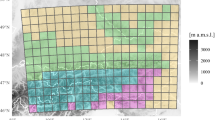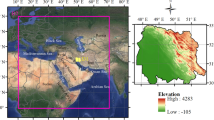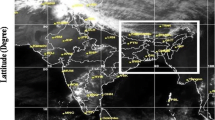Abstract
It is an issue of great attention but yet not very clear whether lightning activities increase or decrease on a warmer world. Reeve et al. presented that lightning activities in global land and the Northern Hemisphere land have positive response to the increase of wet bulb temperature at l000hPa. Is this positive response restricted only to wet bulb temperature or in land? What is the response of global lightning activities (in both land and ocean) to the global surface air temperature variation like? This paper, based on the 5-year or 8-year OTD/LIS satellite-based lightning detecting data and the NCEP reanalysis data, makes a reanalysis of the response of the global and regional lightning activities to temperature variations. The results show that on the interannual time scale the global total flash rate has positive response to the variation in global surface air temperature, with the sensitivity of 17±7% K−1. Also, the seasonal mean flash rate of continents all over the world and that of continents in the Northern Hemisphere have sensitive positive response to increase of global surface air temperature and wet bulb temperature, with the sensitivity of about 13±5% K−1, a bit lower than estimation of 40% K−1 in Reeve et al. However, the Southern Hemisphere and other areas like the tropics show no significant correlation.
Similar content being viewed by others
References
Williams, E. R., The Schumann resonance: A global tropical thermometer, Science, 1992, 256: 1184–1187.
Price, C., Global surface temperatures and the atmospheric electric circuit, Geophysical Research Letters, 1993, 20(13): 1363–1366.
Markson, R., Price, C., Ionospheric potential as a proxy index for global temperature, Atmospheric Research, 1999, 51: 309–314.
Reeve, N., Toumi, R., Lightning activity as an indicator of climate change, Quarterly Journal of the Royal Meteorological Society, 1999, 125: 893–903.
Kalnay, E., Kanamitsu, M., Kistler, R. et al., The NCEP/NCAR 40-year reanalysis project, Bulletin of the American Meteorological Society, 1996, 77(3): 437–471.
Price, C., Rind, D., Modeling global lightning distribution in a general circulation model, Monthly Weather Review, 1994, 122(8): 1930–1939.
Boccippio, D. J., Driscoll, K. T., Koshak, W. J. et al., The Optical Transient Detector (OTD): Instrument characteristics and crosssensor validation, Journal of Atmospheric and Oceanic Technology, 2000, 17: 441–458.
Boccippio, D. J., Koshak, W. J., Blakeslee, R. J., Performance assessment of the Optical Transient Detector and Lightning Imaging Sensor: I. Predicted diurnal variability, Journal of Atmospheric and Oceanic Technology, 2002, 19: 1318–1332.
Author information
Authors and Affiliations
Corresponding author
About this article
Cite this article
Ma, M., Tao, S., Zhu, B. et al. Response of global lightning activity to air temperature variation. Chin. Sci. Bull. 50, 2640–2644 (2005). https://doi.org/10.1007/BF03183663
Received:
Accepted:
Issue Date:
DOI: https://doi.org/10.1007/BF03183663




